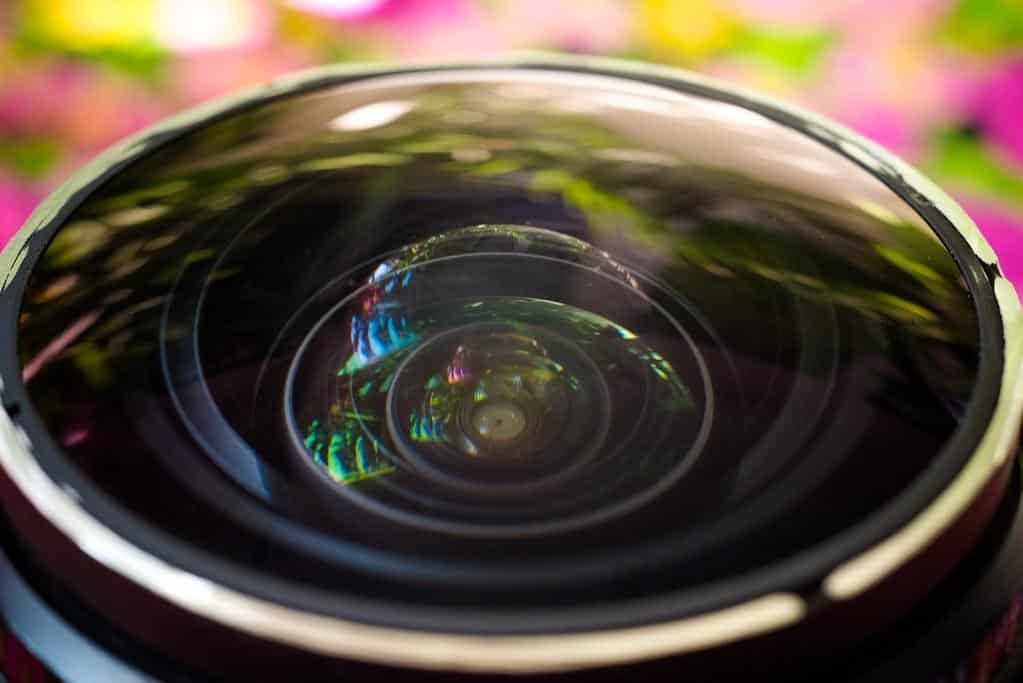When you purchase through links on our site, we may earn an affiliate commission. Here’s how it works.
What is Fisheye Lens – Overview
Professional photographers keep a set of lenses handy to capture and record the best shots. Many types of lenses are available when it comes to capturing professional shots, which can confuse buyers, and they can’t make a decision on which lens is good for their requirements.
Today, we will discuss the most trendy camera lens: the Fisheye Lens. If you are into professional photography, you might have heard about this lens type. This article explains everything you need to know about the Fisheye Lens, its benefits, and why it is important to have in your camera bag! Let’s dive deeper!
What is a Fisheye Lens?
A Fisheye Lens is a lens for a digital camera that shoots extremely wide-angle photos with a 180-degree angle. In terms of photography, it is also known as an ultra-wide angle or super-wide lens. However, its professional name is Fisheye Lens.
The fisheye lens has two main variations: a circular one and a full-framed one. As the name suggests, a circular one captures a spherical shot with a black border. On the other hand, a full-framed lens captures a wide-angle image with full-frame. First, let’s collect more information about the types of Fisheye Lens.
What are the types of Fisheye Lens?
There are two different types of fisheye lenses: a full-frame and a circular. Each one is unique as it captures wide-angle shots differently. Yes, both lenses are designed to capture wide-angle shots differently.

1. Full-frame Fisheye Lens
Professional photographers generally use a full-frame fisheye lens. This lens captures a 180-degree full-frame wide-angle view, with vertical and horizontal angles, not exceeding 180 degrees. It is used to capture the entire frame of the photo.
2. Circular Fisheye Lens
A circular fisheye lens can capture a full 180-degree wide-angle shot from all directions. At first, you will notice that the image captured by the circular fisheye lens looks slightly odd, but that’s the use of this lens. It is used in skateboarding, sports, and artistic photography.
What’s the Significance of a Fisheye Lens?
A fisheye lens is mainly used for outdoor photography. Most professional photographers shoot their photos using this lens, as its 180-degree wide-angle capturing capacity covers the entire frame.
Unlike a standard camera lens, a fisheye lens captures the frame at a full 180 degrees wide. It is also used for land mapping as it captures a wide full frame. You can even use it for professional videography, as it records high-definition videos with a full frame of 180 degrees.
Fisheye Lens: The History
Robert W. Wood named this camera lens a Fisheye Lens in 1906. He was the one who invented the lens. By profession, he was an American physicist with a passion for photography. It was first used in 1920 to study clouds. Initially, the fisheye lens carried varied angles to capture the photos from 100 to 180 degrees.
Why do Photographers Use Fisheye Lenses?
As noted above, a fisheye lens is designed to capture ultra-wide-angle photos, i.e., 180-degree photos. They are primarily used for skateboard photography, artistic photography, and landscape photography. The reasons why professional photographers use fisheye lenses are listed below!
1. For image distortion
Image distortion is a worrying and annoying problem for photographers. When you use a fisheye lens, however, there will be no image distortion. The lens adds its own effect to the photo and eliminates the image distortion itself.
2. Point-shoot
You can get amazing shots by simply pointing the lens toward the sky or keeping the lens grounded and looking upward. With the capability of capturing ultra-wide angle shots, the lens gives you amazing images every time with point-shoot photography.
3. Unleash Creativity
Photographers can unleash their creativity using the ultra-wide angle lens, i.e., the fisheye lens. The fisheye lens can capture amazing shots you can’t get through a standard lens. You can capture beautiful images by tweaking your camera to unleash new skills in your photography career.
What are the characteristics of a fisheye lens?
The characteristics of a fisheye lens are listed below:
1. Focal Length
The focal length of a full-frame fisheye lens is 15mm to 16mm, and the same is true for the circular fisheye lens, which is between 8mm and 10mm.
2. Angle of View
At the broadest point, the angle of view of the fisheye lens is 180 degrees.
3. Depth of Field
Since the fisheye lens has an extreme angle, the depth of field of the fisheye lens is significant.
4. Image Distortion
The image distortion through a fisheye lens is barrel distortion, where the image’s center point is stretched. The image looks slightly different from the regular lens images due to the ultra-wide angle lens.

Image distortion of fisheye lens
Applications of Fisheye Lens
Fisheye lenses are in high demand due to the increase in the internet world through social media networks, vlogging, and more. The range of applications where the fisheye lens is high in demand is listed below:
#1. Fisheye lenses are used in artistic, skateboard, extreme sports, and landscape photography as they can capture ultra-wide shots covering up everything in the frame.
#2. Scientists and resource managers also use the fisheye lens to capture spherical images for their project requirements.
#3. Astronomers also use these lenses to study clouds and light pollution in the environment.
#4. Fisheye lenses are used for night sky projection in planetariums. They are primarily used to create digital content for planetariums.
#5. Flight and combat flight simulators also use a fisheye lens to control air traffic.
#6. Fisheye lenses are used in computer graphics for environment mapping.
#7. Talk about today’s scenario and how fisheye lenses are used in action cameras. Most bikers, divers, skaters, swimmers, and other sportspeople use such action cameras to capture and record the best shots.
What are the key differences between a Fisheye Lens and a Wide-angle Lens?
A fisheye lens is designed to capture images with a full-frame or ultra-wide frame. The photos taken from this lens are centrally distorted, which is a circular distortion of the image that you can see clearly.
When you look closely at the videos recorded through a fisheye lens, the images start moving away from you. This is because of the center distortion.
On the other hand, wide-angle lenses capture images with full-frame as they don’t have a central point to focus on. This type of lens captures the entire scene.
Wide-angle lenses capture a large field of view over 180 degrees. However, when users need to capture 180-degree shots, they prefer a fisheye lens, not a wide-angle one.
Beginners get confused over choosing a wide-angle lens and a fisheye lens. They believe these types are similar, but they are not! You must understand each type’s significance before you pick one for your professional photography project.
Are fisheye lenses worth it?
Like every other lens, fisheye lenses are important in professional photography. However, whether to use one depends on your requirements. Fisheye lenses capture 180-degree wide-angle photos with central distortion.
If we talk about the demands of the consumers, they prefer fisheye lens photos and not wide-angle ones as they look different and also capture the viewer’s eyeballs.
Know your basic requirements before you purchase the Fisheye lens. If you are into professional photography, then you must keep it handy.
Fisheye Lens: Frequently Asked Questions
Question 1: What is the definition of a fisheye lens?
A fisheye lens is capable of capturing ultra-wide-angle shots at 180 degrees. Fisheye lenses are used in artistic photography, landscaping, sports photography, skateboard photography, and more.
Question 2: How many fisheye lenses are available on the market?
There are two types of fisheye lenses available on the market. These types are different from each other as they capture ultra-wide-angle photos differently. You can add a full-frame fisheye lens and a circular fisheye lens.
Question 3: How do scientists use a fisheye lens?
Scientists use fisheye lenses for hemispherical photography. They have to capture such shots to study things from all directions, so they prefer to use a fisheye lens rather than an ultra-wide lens.
Final Thoughts:
Fisheye lenses have become popular in photography. In today’s world, people prefer fisheye lenses to normal ones, as they can help unleash creativity.
You all use a normal lens, but for special photography, a fisheye lens is a must!
This article provides in-depth information about the fisheye lens. So what are you waiting for? Buy a new fisheye lens and enjoy the best photography experience with this unique lens.
See Also